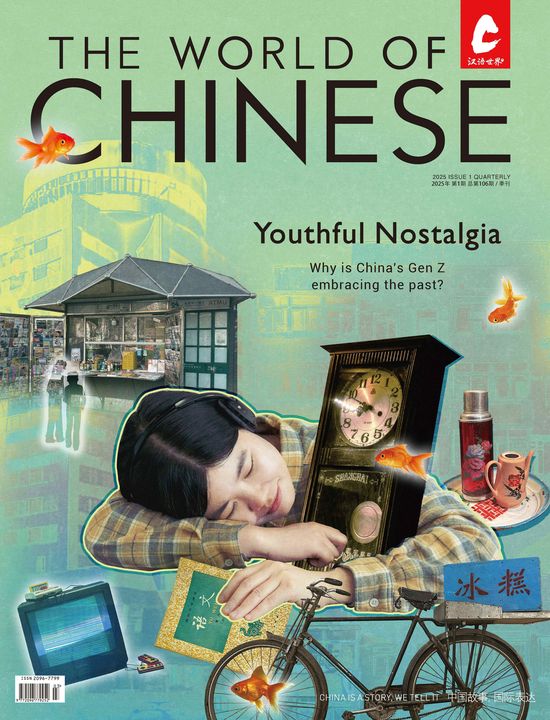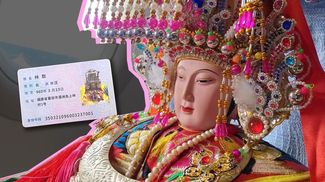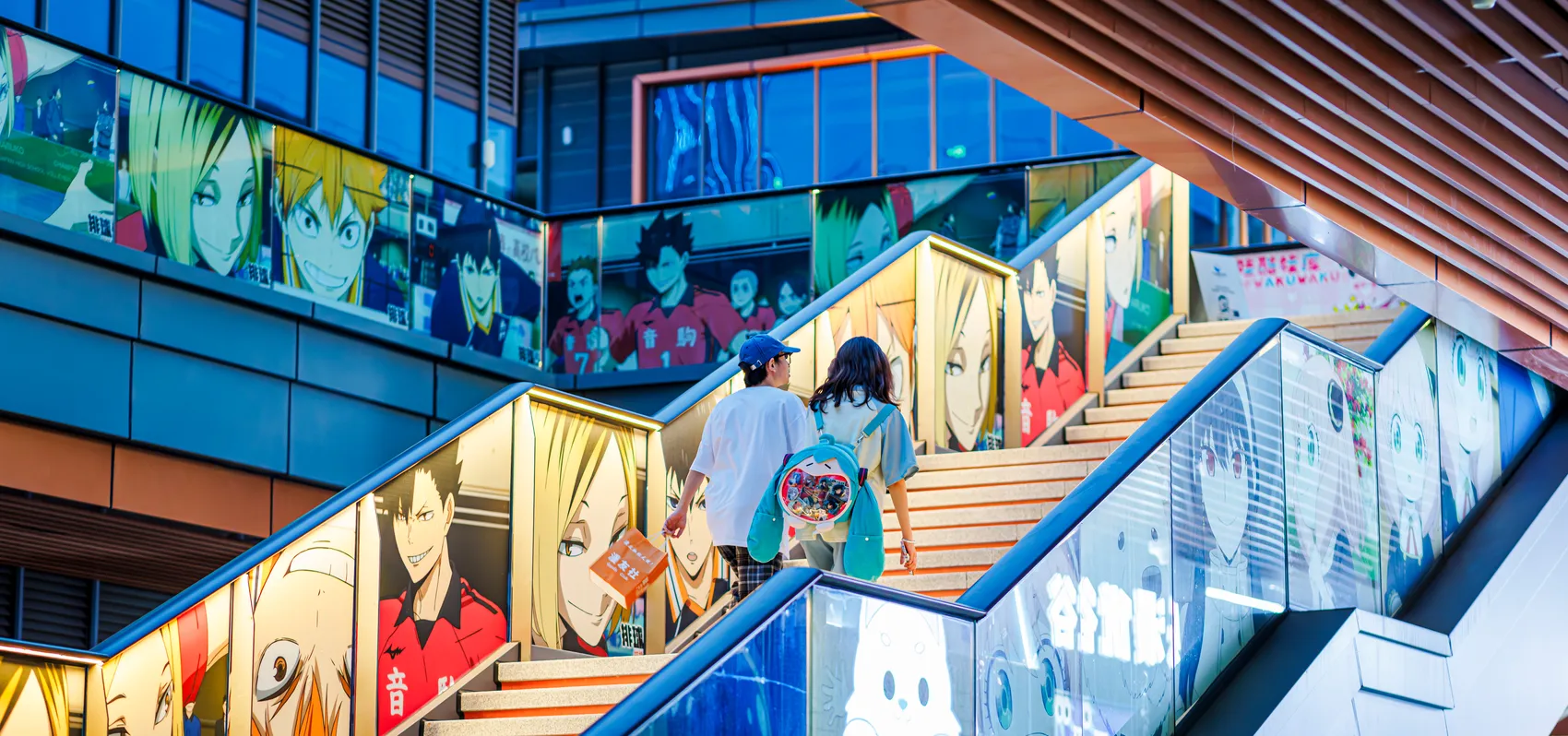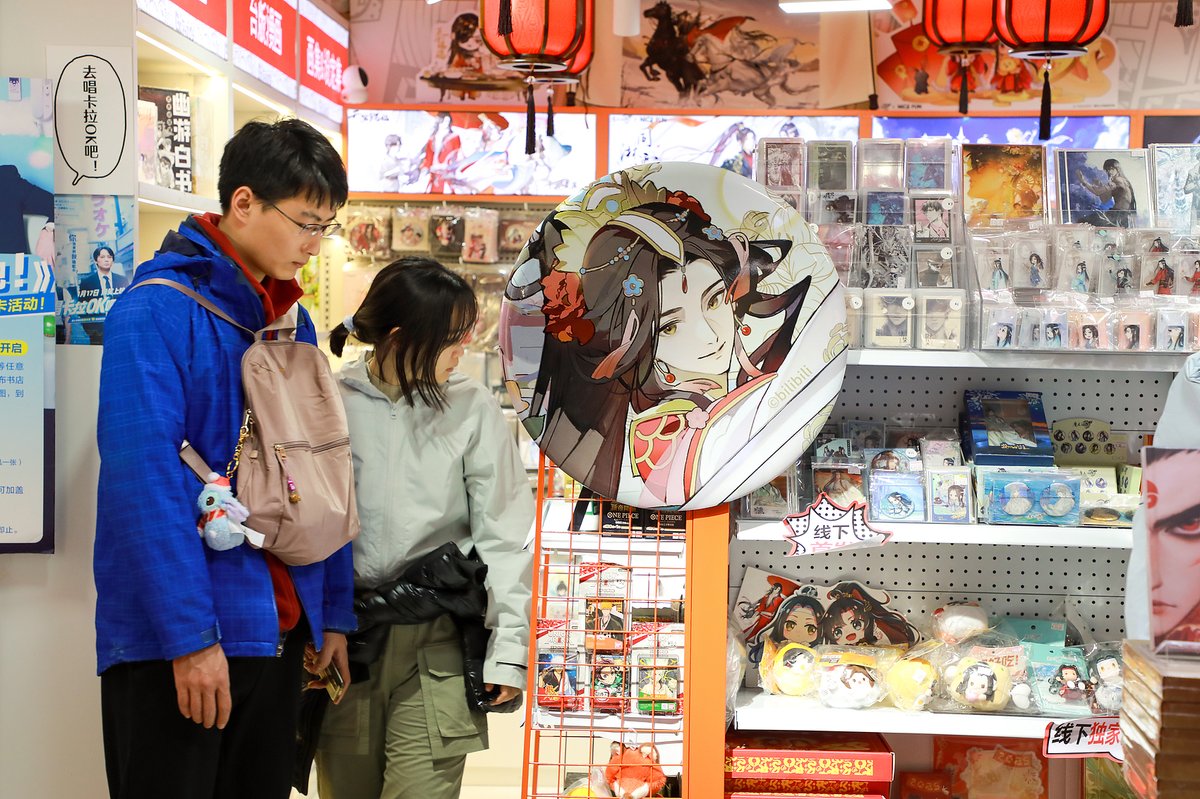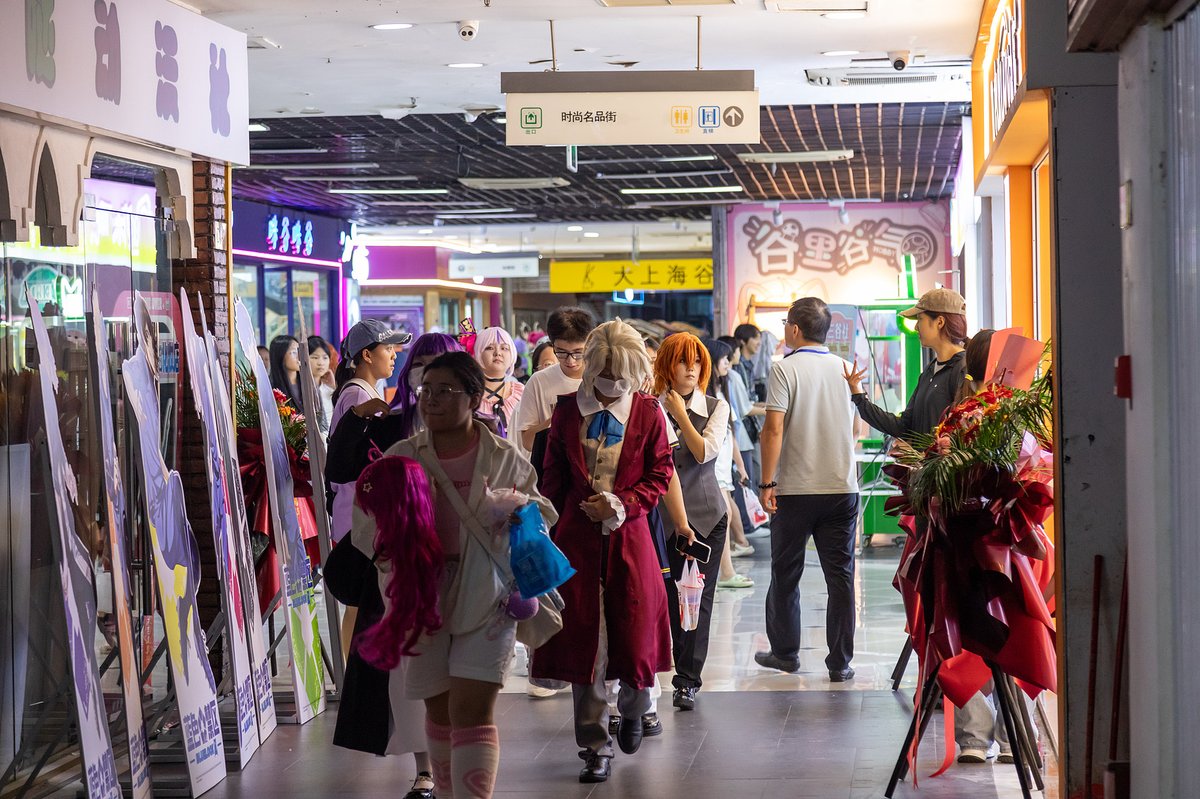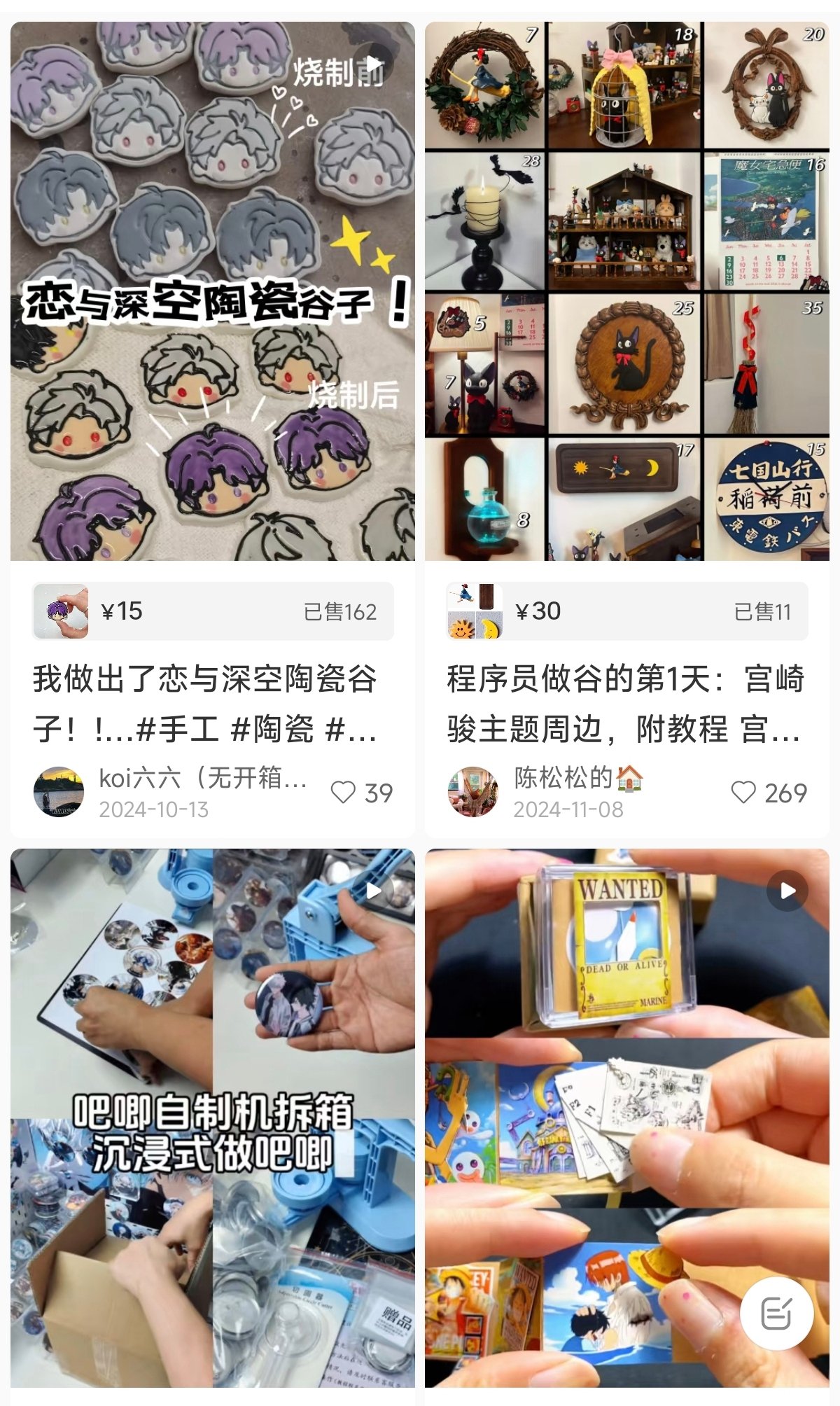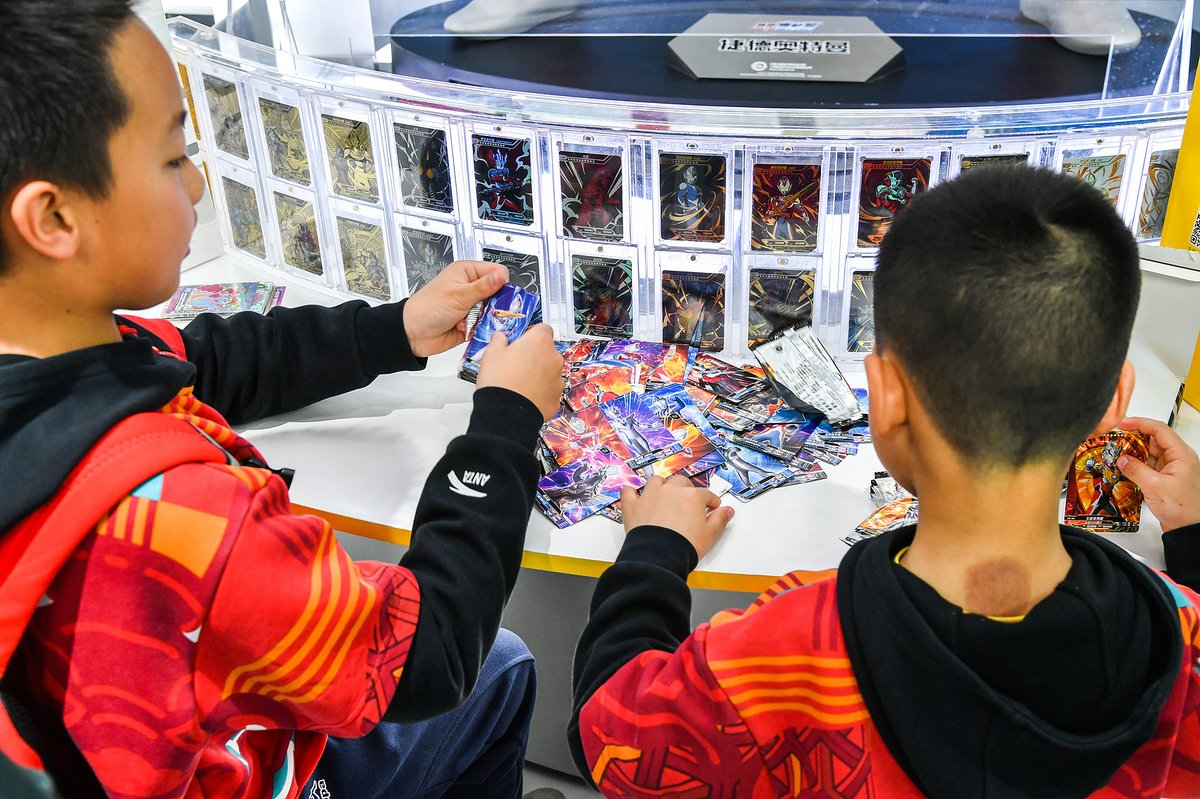With the sale of anime-related products now a multi-billion-yuan industry, there’s no sign of the trend slowing down. But who are the beneficiaries, and what impact has this explosion in popularity had on the subcultures it grew out of?
On the desk of 21-year-old college student Bian Lanqi proudly sit several of her latest acquisitions. Among them is a Zelda figurine, several badges from The Lost Tomb, and a handmade bag decorated with limited edition cards from The King’s Avatar. To an outsider, these video game and anime-related trinkets might seem like mere decorations, but for Bian, they are something deeper: fragments of a world where stress fades, dreams feel tangible, and belonging is just one collectible away.
In recent years, China has witnessed a monumental rise in the “goods economy”—a market where virtual and fantasy-themed products, from anime figurines to digital avatars, are bought, sold, and traded with fervor. At the heart of this phenomenon lies erciyuan (二次元), or “two-dimensional,” a term originally referring to Japan’s 2D anime and manga culture but has since evolved into a broader economic and fan-driven force in China.
But as its popularity continues to grow, what does the movement’s future look like, now that its once-small fan community goes up against market forces eager to cash in?
Discover more youth culture in China:
- Nostalgia-Core: Why China’s Gen Z is Embracing the Past
- The Young Chinese Lottery Shop Owners in It to Win It
- Is China’s New Social Media-Fueled Tea Craze More Than Just a Fad?
From niche subculture to economic powerhouse
The first wave of erciyuan culture hit Chinese shores in the 1980s and 90s, with the arrival of several popular Japanese animations like Astro Boy and Dragon Ball. In the beginning, it spread among a small group of Millennial and Gen Z enthusiasts. To the broader public, the trend remained largely unfamiliar and alien—some even labeled it deleterious to minors due to its “addictive” nature.
Erciyuan’s meteoric rise in recent years can be attributed in part to the popularity of the video-streaming site Bilibili, which since its launch in 2009, has served as a de facto home for anime content in China—organizing anime expos in major cities and helping transform the subculture into a mainstream commercial force.
Bian, as an early adoptee of erciyuan culture, has witnessed, first-hand, the change in people’s attitudes toward it in her hometown of Hangzhou, the capital of Zhejiang province. “When I was in primary school, there were rarely any erciyuan goods shops,” she recalls. “However, now almost every shopping center in my hometown has shops dedicated to erciyuan IPs. Hangzhou is even considered to be one of the largest erciyuan economic hubs in China.”
Guzi (谷子), derived from the phonetic translation of the English word “goods,” but also meaning grain, encompasses IP-derived merchandise such as baji (吧唧), or badges; figurines; acrylic keychains; and tongbao (痛包, “itabags”), backpacks often decorated with all of the aforementioned paraphernalia. The act of purchasing these goods is called chigu (吃谷), literally “eating goods,” on account of fans subsisting on these items while waiting for new releases from their favorite franchises.
Therefore, the goods economy refers specifically to the peripheral merchandise economy centered around ACG (anime, comics, games) and virtual idol IPs. To fans, these cartoons and their collectibles provide emotional value and a sense of community, while behind the scenes, they’re at the heart of a burgeoning, multi-billion-yuan industry and the forefront of several new economic forms.
As of last year, the number of ACG consumers in China was estimated to be 503 million, according to data from iiMedia Research. In addition, China’s ACG industry was valued at nearly 600 billion yuan in 2024, making it the world’s largest market for anime, comics, games, and related products. That figure is projected to more than double in the next four years, reaching 834 billion yuan by 2029.
Escapism or empowerment?
Originally, erciyuan culture was synonymous with the fictional, illustrated, and animated worlds distinct from real life, and can be traced back to post-World War II Japan. Astro Boy, which aired in 1963, features its eponymous hero, a robot boy with incredible abilities, navigating a world of conflict between humans and robots. The series is considered a pioneering work of Japanese animation and thus one of the precursors of the erciyuan movement.
Many of China’s Millennials and Gen Z grew up with comic books and video games. Born amid the country’s one-child policy, which officially ended in 2015, the pressures to succeed academically left little time outside of the classroom. Nevertheless, a longing to rebel and a need for belonging pervaded, and ACG culture offered a much-needed means for escape, a safe haven for their imaginations, and a resistance against parental authority. Alongside this trend, ACG character cards, figurines, and badges have gradually become a form of social currency for China’s Gen Z, providing a sense of belonging within the fan community.
“I used to be a passionate erciyuan fan in my teenage years. When I saw goods on someone’s itabag, especially if they were from the same manga IP I liked, I’d get really excited, feeling like I had found my tribe,” 24-year-old postgraduate student Zhong Shangyun from Guangzhou tells TWOC. Within these communities, fans usually share their love for virtual idols, games, and even develop their own linguistic systems, allowing them to recognize each other and further deepen ties. For example, mengxin (萌新) is used to refer to new members, whereas taitai (太太) is a term of respect used in reference to prominent creators.
While erciyuan was born as a subculture in China, both its connotation and manifestation have changed significantly in recent years. In research conducted by The Paper, a Chinese news outlet, 22 erciyuan fans were asked about their hobby. Interviewee Qu Ye, born in the 1980s, espoused the benefits of how erciyuan’s artistic style is not fixed, and therefore, the definition of ACG is constantly evolving.
“At the heart of erciyuan is the air of zhong’er (中二),” Liu Yi, a respondent born in the 80s, explained during their interview. Liu was referring to the Chinese transliteration of the Japanese term chunibyo (中二病), or “second year of junior high syndrome.” Zhong’er has come to symbolize the onset of adolescence—a pivotal time when a teenager’s worldview and a sense of self begin to take shape. “Erciyuan fulfills a spiritual need for this particular age group,” Liu adds.
However, in China, despite many erciyuan fans now being in their 20s or older, their love for 2D worlds has not faded. On the contrary, for many, erciyuan now offers an escape from real-world pressures in adulthood. “Erciyuan provides a friendly and warm community. Showing what makes you different is allowed; niche preferences are allowed,” Bian describes. “I, for example, love all redheaded characters, and I’ve found that there are plenty of people here who share my preferences as well.”
Moreover, as this generation’s spending power increases, their love for ACG has made them a formidable economic force. “I became a fan of Chinese manga IP The King’s Avatar when it became popular around 2011, and now every month I’ll still spend over 100 yuan on related goods,” Bian says.
The price of such goods can vary from a few yuan to thousands. Their value is often determined by the popularity of the IP, but limited-edition goods and aggressive marketing can also cause certain items to go viral, and sell out completely.
The origin of goods is also an important factor in determining their value. “Generally speaking, goods made in China are better in terms of design and craftsmanship, but they don’t hold value or have the same collectible appeal as those from Japan—even though the latter often use more basic materials and are less detailed,” Bian tells TWOC. “That’s because many IPs originate in Japan, and people feel that officially licensed goods from the original creators have more collectible value.”
And despite the special significance of officially licensed goods, many fans go the extra step and create their own, resulting in a huge market for unofficial fan-made merchandise. Compared to licensed merch, fan-made goods tend to be more creative, encompass a wider variety of mediums, and are cheaper. Bian is one such erciyuan fan who also runs a handmade goods business on the side. “It’s not just about making money. It’s a way to express our love and enthusiasm for an IP, and if the buyer is also a devoted fan, I’ll often just give it to them for free,” she says.
However, as the value of erciyuan IPs continues to rise and license holders increasingly lease the rights to secondary companies to sell branded goods, generating significant profits in return, the tightening regulation of the market has placed fan-made goods in an awkward position. Despite now operating in a legal gray area, the demand for fan-made goods nevertheless remains huge, with some unofficial goods’ creators gaining significant influence on social media. For example, one fan-made badge from the Japanese manga Land of the Lustrous received 13,000 likes on Xiaohongshu, or RedNote. Underneath the post, one commenter wrote: “If fan-made goods are not authorized by the creator, they constitute infringement,” to which another replied: “It also serves as a form of promotion for the IP, so I believe it’s a win-win.”
When fantasy worlds drive real growth
The rising popularity of erciyuan in China has quickly attracted the attention of the capital market. According to a report by state-media channel CCTV, the multi-billion goods economy has become a new area of focus for A-share investors. Data released by business platform Tianyecha shows that the number of enterprises related to the goods economy in China exceeds 6 million, 96 percent of which were established in the past five years.
In addition to stimulating stocks and online sales, erciyuan is also seen as a magic fix for revitalizing declining brick-and-mortar commercial districts. In early 2025, a 15,000-square-meter ACG-themed zone called Z PARK was established in an underground mall in Hangzhou’s central business district. Within four months after its opening, six goods stores had opened in rapid succession, and more than a dozen anime conventions have already been held in the space. A report released in January found that at least 39 cities in China had 30 or more goods stores, for a total of 3,239 stores nationwide.
However, the rapid expansion of the goods economy has also led fans to lament several issues, including the homogenization of merchandise, inflated prices, and poor-quality products. Moreover, not all goods stores can survive beyond being a “flash in the pan” in the increasingly competitive market, particularly smaller, independent shops in less populous cities. Market analysis shows that 60 percent of the erciyuan goods market share is dominated by a handful of leading companies, such as POP MART, MINISO, and 52TOYS. Waves of smaller goods stores closing have made headlines since the end of last year.
At the same time, goods-related blind boxes have also emerged in recent years, prompting fans to spend more to hunt down specific items. “We call it offline gambling,” Zhong says. “Some fans are willing to spend hundreds of times the original price just to get a desired My Little Pony blind box card—and a significant portion of these consumers are kids under 18 years old.” To curb the purchase of erciyuan goods by minors, cities such as Shanghai have passed regulations banning businesses from selling ACG-related products to children under the age of 8.
And although the authorities are working to regulate the burgeoning goods market, in the shadows, the buying frenzy continues to grow unchecked. On China’s secondhand products trading platform Xianyu, popular trading cards and limited-edition badges can be found at inflated prices exceeding 10,000 yuan. In one online auction, a Haikyuu!! badge was eventually purchased by a Gen Z buyer for 72,000 yuan. “Without collecting the erciyuan goods I want, my life would be incomplete,” they told the media after the auction.
And as the goods economy flourishes, some ask to what extent the original spirit of erciyuan culture has been eroded by this consumerist feast. Initially, goods were often sent freely among fans to express their shared love of a particular IP. But as the commercial value of some IP has increased, there have been reports of people dressing up as specific characters at anime conventions simply to collect free goods, only to resell them at a profit to other fans. “I’m disappointed to see erciyuan culture turn into a tool of earning money,” Bian sighs.
With the influx of capital, goods stores continue to expand across the country, and it seems inevitable that erciyuan culture is moving from a niche interest and into the mainstream—something Bian says she’s not entirely against. “I’m willing to spend money for my beloved IP, as long as the goods are thoughtfully designed and the content is truly worth paying for.”
